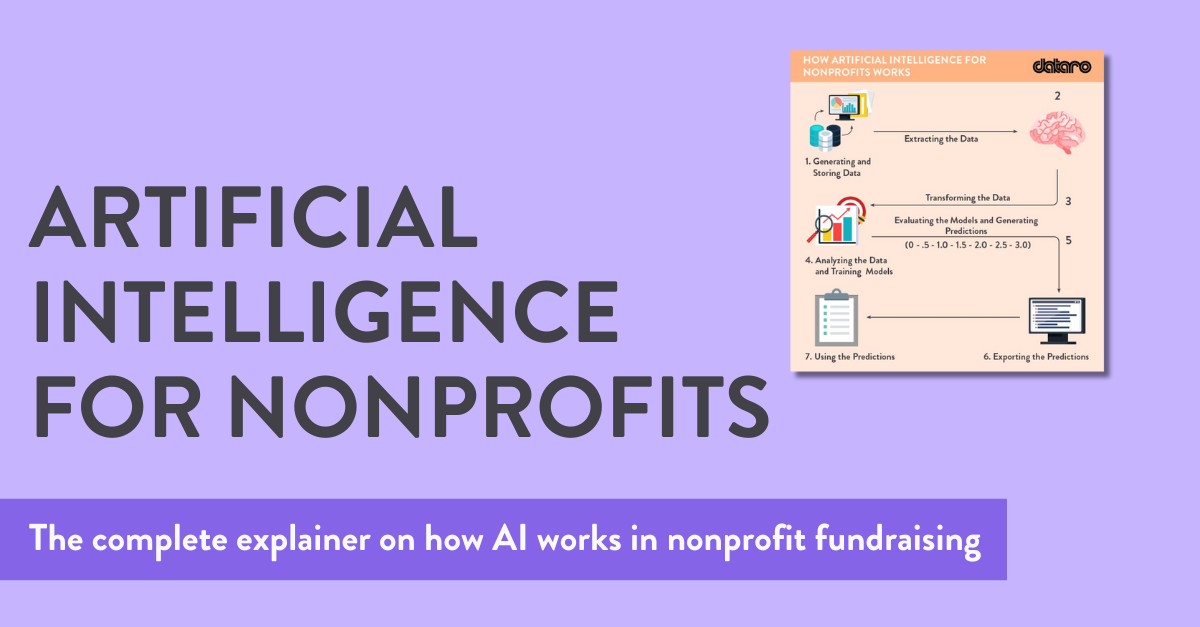
CASE STUDY: How to Double RG Reactivations using Machine Learning
Chris Paver –
Our client, a highly regarded children’s charity, runs a monthly reactivation telemarketing campaign to reconnect with its lapsed regular givers.
The problem: conversion rates
Our client had achieved some strong results historically, but had been falling short of its target conversion rates for telemarketing reactivations over the past 6 months. It was looking for a more powerful analytical tool to select which lapsed donors to include in the program. The goal of the new tool was simple: to improve conversion rates and reactivate more regular givers.
The solution: propensity modelling
Dataro tackled this problem with its machine learning approach. We trained our predictive models on the full history of our partner’s database and generated ‘propensity scores’ for lapsed donors. Through this propensity modelling process, we identified the donors most likely to reactivate their regular gifts that month.
Some organisations already apply approaches such as RFM analysis to generate scores for each donor and decide who to include in similar campaigns. However, these simple techniques only consider a limited set of ‘factors’ and provide no insights into the importance of each factor. Using machine learning, we considered dozens of factors to generate much more accurate predictions. Important factors in the reactivation model included number of days overdue, payment regularity, age, total payments, days since last payment, days since acquisition, tenure, and many more.
Through this approach, our client was able to contact the donors who were the most likely to reactivate, rather than choosing from its lapsed donor pool at random or using simplistic methods.
The campaign
We began by ingesting our client’s data for more than 40,000 lapsed donors. Using machine learning, we generated individual propensity scores for each donor ranging from 0 – 1 (with 1 representing high propensity to reactivate). We identified the 5000 lapsed donors who were the most likely to reactivate.
Our client then applied its own exclusions to the data and selected a list of approximately 1500 donors with Dataro scores between 0.5 and 1 to include for reactivation calls that month. This process allowed our client to choose a list nearly twice the size of its normal reactivation call list. The call centre was able to successfully contact 662 people, about 40% of the list.
The campaign results validated the power of Dataro’s machine learning approach to propensity modelling. The campaign showed:
- Our client beat its conversion rate target for the first time in six months.
The conversion rate jumped from 8% the previous month to 13% using Dataro’s targeting, even with the substantially bigger cohort.
The campaign converted 2.5 times as many regular givers compared to the previous month – more than 50 additional regular givers converted.
Campaign summary

To quantify the value of Dataro’s more accurate predictions, we can compare the campaign’s projected return on investment against the previous month.
Firstly, let’s assume that each donor gives an average gift of $30 and remains active for 6 months after reactivation. Using these figures, the campaign generated a projected $15,300, compared to $5,940 the month before. Of course, with a strong retention program the potential return is substantially increased.
Now let’s examine the difference arising directly from the better conversion rate using Dataro targeting. If we assume our partner would have achieve the same conversion rate this month as the month before, it would have converted 53 people using its own selection approach. Dataro’s targeting therefore resulted in at least an extra 32 regular givers from a single campaign. This delivers a much better campaign ROI.
Application to other types of campaigns
This example demonstrates one of the potential applications of propensity modelling to improve RG campaign performance. Dataro has successfully deployed models in areas including RG upgrades, RG attrition, and cash giving appeals.




